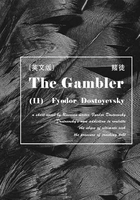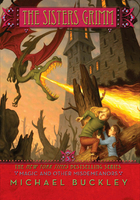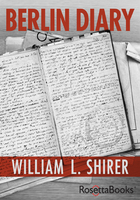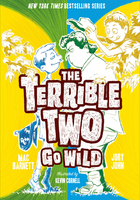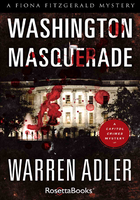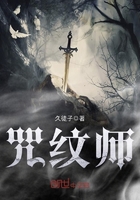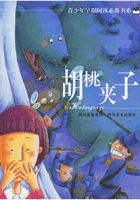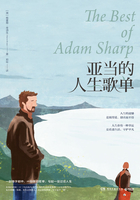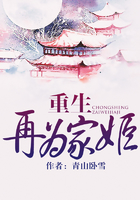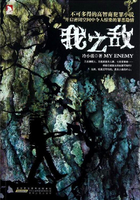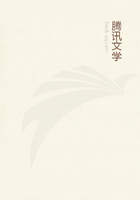What is a Myth?
Human beings have always been mythmakers. Archaeologists have unearthed Neanderthal graves containing weapons, tools and the bones of a sacrificed animal, all of which suggest some kind of belief in a future world that was similar to their own. The Neanderthals may have told each other stories about the life that their dead companion now enjoyed. They were certainly reflecting about death in a way that their fellow-creatures did not. Animals watch each other die but, as far as we know, they give the matter no further consideration. But the Neanderthal graves show that when these early people became conscious of their mortality, they created some sort of counter-narrative that enabled them to come to terms with it. The Neanderthals who buried their companions with such care seem to have imagined that the visible, material world was not the only reality. From a very early date, therefore, it appears that human beings were distinguished by their ability to have ideas that went beyond their everyday experience.
We are meaning-seeking creatures. Dogs, as far as we know, do not agonise about the canine condition, worry about the plight of dogs in other parts of the world, or try to see their lives from a different perspective. But human beings fall easily into despair, and from the very beginning we invented stories that enabled us to place our lives in a larger setting, that revealed an underlying pattern, and gave us a sense that, against all the depressing and chaotic evidence to the contrary, life had meaning and value.
Another peculiar characteristic of the human mind is its ability to have ideas and experiences that we cannot explain rationally. We have imagination, a faculty that enables us to think of something that is not immediately present, and that, when we first conceive it, has no objective existence. The imagination is the faculty that produces religion and mythology. Today mythical thinking has fallen into disrepute; we often dismiss it as irrational and self-indulgent. But the imagination is also the faculty that has enabled scientists to bring new knowledge to light and to invent technology that has made us immeasurably more effective. The imagination of scientists has enabled us to travel through outer space and walk on the moon, feats that were once only possible in the realm of myth. Mythology and science both extend the scope of human beings. Like science and technology, mythology, as we shall see, is not about opting out of this world, but about enabling us to live more intensely within it.
The Neanderthal graves tell us five important things about myth. First, it is nearly always rooted in the experience of death and the fear of extinction. Second, the animal bones indicate that the burial was accompanied by a sacrifice. Mythology is usually inseparable from ritual. Many myths make no sense outside a liturgical drama that brings them to life, and are incomprehensible in a profane setting. Third, the Neanderthal myth was in some way recalled beside a grave, at the limit of human life. The most powerful myths are about extremity; they force us to go beyond our experience. There are moments when we all, in one way or another, have to go to a place that we have never seen, and do what we have never done before. Myth is about the unknown; it is about that for which initially we have no words. Myth therefore looks into the heart of a great silence. Fourth, myth is not a story told for its own sake. It shows us how we should behave. In the Neanderthal graves, the corpse has sometimes been placed in a foetal position, as though for rebirth: the deceased had to take the next step himself. Correctly understood, mythology puts us in the correct spiritual or psychological posture for right action, in this world or the next.
Finally, all mythology speaks of another plane that exists alongside our own world, and that in some sense supports it. Belief in this invisible but more powerful reality, sometimes called the world of the gods, is a basic theme of mythology. It has been called the 'perennial philosophy' because it informed the mythology, ritual and social organisation of all societies before the advent of our scientific modernity, and continues to influence more traditional societies today. According to the perennial philosophy, everything that happens in this world, everything that we can hear and see here below has its counterpart in the divine realm, which is richer, stronger and more enduring than our own.[1] And every earthly reality is only a pale shadow of its archetype, the original pattern, of which it is simply an imperfect copy. It is only by participating in this divine life that mortal, fragile human beings fulfil their potential. The myths gave explicit shape and form to a reality that people sensed intuitively. They told them how the gods behaved, not out of idle curiosity or because these tales were entertaining, but to enable men and women to imitate these powerful beings and experience divinity themselves.
In our scientific culture, we often have rather simplistic notions of the divine. In the ancient world, the 'gods' were rarely regarded as supernatural beings with discrete personalities, living a totally separate metaphysical existence. Mythology was not about theology, in the modern sense, but about human experience. People thought that gods, humans, animals and nature were inextricably bound up together, subject to the same laws, and composed of the same divine substance. There was initially no ontological gulf between the world of the gods and the world of men and women. When people spoke of the divine, they were usually talking about an aspect of the mundane. The very existence of the gods was inseparable from that of a storm, a sea, a river, or from those powerful human emotions–love, rage or sexual passion–that seemed momentarily to lift men and women onto a different plane of existence so that they saw the world with new eyes.
Mythology was therefore designed to help us to cope with the problematic human predicament. It helped people to find their place in the world and their true orientation. We all want to know where we came from, but because our earliest beginnings are lost in the mists of prehistory, we have created myths about our forefathers that are not historical but help to explain current attitudes about our environment, neighbours and customs. We also want to know where we are going, so we have devised stories that speak of a posthumous existence–though, as we shall see, not many myths envisage immortality for human beings. And we want to explain those sublime moments, when we seem to be transported beyond our ordinary concerns. The gods helped to explain the experience of transcendence. The perennial philosophy expresses our innate sense that there is more to human beings and to the material world than meets the eye.
Today the word 'myth' is often used to describe something that is simply not true. A politician accused of a peccadillo will say that it is a 'myth', that it never happened. When we hear of gods walking the earth, of dead men striding out of tombs, or of seas miraculously parting to let a favoured people escape from their enemies, we dismiss these stories as incredible and demonstrably untrue. Since the eighteenth century, we have developed a scientific view of history; we are concerned above all with what actually happened. But in the pre-modern world, when people wrote about the past they were more concerned with what an event had meant. A myth was an event which, in some sense, had happened once, but which also happened all the time. Because of our strictly chronological view of history, we have no word for such an occurrence, but mythology is an art form that points beyond history to what is timeless in human existence, helping us to get beyond the chaotic flux of random events, and glimpse the core of reality.
An experience of transcendence has always been part of the human experience. We seek out moments of ecstasy, when we feel deeply touched within and lifted momentarily beyond ourselves. At such times, it seems that we are living more intensely than usual, firing on all cylinders, and inhabiting the whole of our humanity. Religion has been one of the most traditional ways of attaining ecstasy, but if people no longer find it in temples, synagogues, churches or mosques, they look for it elsewhere: in art, music, poetry, rock, dance, drugs, sex or sport. Like poetry and music, mythology should awaken us to rapture, even in the face of death and the despair we may feel at the prospect of annihilation. If a myth ceases to do that, it has died and outlived its usefulness.
It is, therefore, a mistake to regard myth as an inferior mode of thought, which can be cast aside when human beings have attained the age of reason. Mythology is not an early attempt at history, and does not claim that its tales are objective fact. Like a novel, an opera or a ballet, myth is make-believe; it is a game that transfigures our fragmented, tragic world, and helps us to glimpse new possibilities by asking 'what if ?'–a question which has also provoked some of our most important discoveries in philosophy, science and technology. The Neanderthals who prepared their dead companion for a new life were, perhaps, engaged in the same game of spiritual make-believe that is common to all mythmakers: 'What if this world were not all that there is? How would this affect our lives–psychologically, practically or socially? Would we become different? More complete? And, if we did find that we were so transformed, would that not show that our mythical belief was true in some way, that it was telling us something important about our humanity, even though we could not prove this rationally?'
Human beings are unique in retaining the capacity for play.[2] Unless they are living in the artificial conditions of captivity, other animals lose their early sense of fun when they encounter the harsh realities of life in the wild. Human adults, however, continue to enjoy playing with different possibilities, and, like children, we go on creating imaginary worlds. In art, liberated from the constraints of reason and logic, we conceive and combine new forms that enrich our lives, and which we believe tell us something important and profoundly 'true'. In mythology too, we entertain a hypothesis, bring it to life by means of ritual, act upon it, contemplate its effect upon our lives, and discover that we have achieved new insight into the disturbing puzzle of our world.
A myth, therefore, is true because it is effective, not because it gives us factual information. If, however, it does not give us new insight into the deeper meaning of life, it has failed. If it works, that is, if it forces us to change our minds and hearts, gives us new hope, and compels us to live more fully, it is a valid myth. Mythology will only transform us if we follow its directives. A myth is essentially a guide; it tells us what we must do in order to live more richly. If we do not apply it to our own situation and make the myth a reality in our own lives, it will remain as incomprehensible and remote as the rules of a board game, which often seem confusing and boring until we start to play.
Our modern alienation from myth is unprecedented. In the pre-modern world, mythology was indispensable. It not only helped people to make sense of their lives but also revealed regions of the human mind that would otherwise have remained inaccessible. It was an early form of psychology. The stories of gods or heroes descending into the underworld, threading through labyrinths and fighting with monsters, brought to light the mysterious workings of the psyche, showing people how to cope with their own interior crises. When Freud and Jung began to chart the modern quest for the soul, they instinctively turned to classical mythology to explain their insights, and gave the old myths a new interpretation.
There was nothing new in this. There is never a single, orthodox version of a myth. As our circumstances change, we need to tell our stories differently in order to bring out their timeless truth. In this short history of mythology, we shall see that every time men and women took a major step forward, they reviewed their mythology and made it speak to the new conditions. But we shall also see that human nature does not change much, and that many of these myths, devised in societies that could not be more different from our own, still address our most essential fears and desires.

